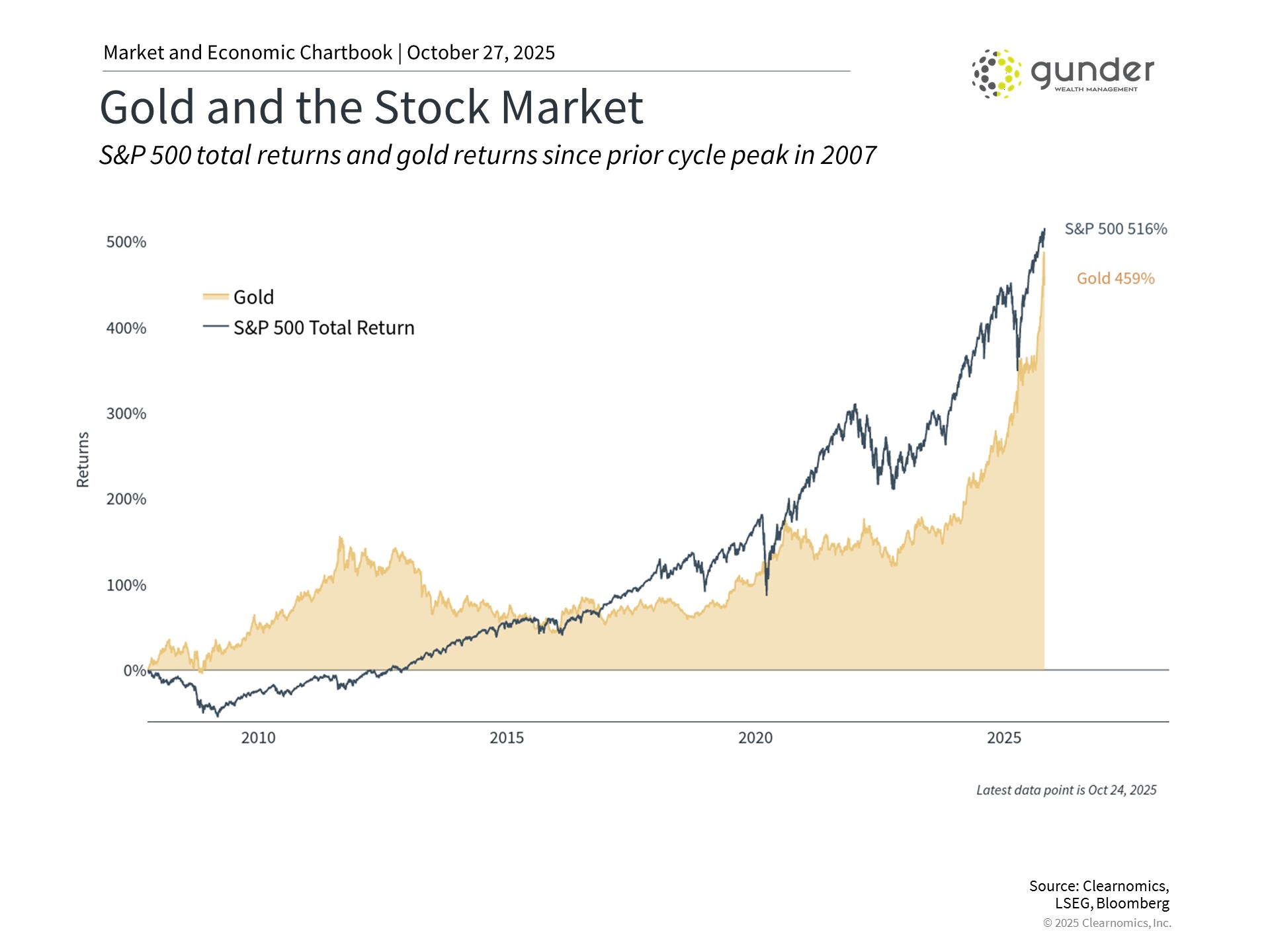
Gold prices jumped more than 60% this year, climbing above $4,300 per ounce. It’s no wonder people are asking, “What’s going on?” and “Is this time any different?” Let’s attempt to make sense of the recent gold rally and currency concerns.
Some say it’s all about the “debasement trade.” The idea here is that governments may weaken their currencies by spending more than they collect in taxes and keeping interest rates low. When the dollar weakens, investors might consider buying assets like gold because they see it as holding its value better than cash.
While worries about government debt are real, history shows that predicting gold prices is hard. For long-term investors, the key question isn’t whether to own stocks, bonds, or gold, but how much of each to hold. This is especially important to consider in light of the current gold rally.
What Is Currency Debasement?
Currency debasement is an old concept that comes up every few years. Originally, it meant governments putting less precious metal in their coins, allowing them to make more coins from the same amount of metal, but each coin was worth less.
Today, most money is “fiat currency” – it has value because people trust the government that issues it, not because it’s backed by gold. Modern debasement concerns focus on whether governments will allow higher inflation (rising prices) and a weaker currency to make their debt easier to manage.
Right now, there’s mixed evidence about whether this is happening. Inflation measures are around 3% or lower, which is not extreme. Bond markets aren’t pricing in high inflation either. The 10-year Treasury yield is around 4%, and inflation expectations are only 2.3%. While the dollar has fallen about 10% this year, it’s still near its highest levels over the past 20 years.
How To Time A Gold Rally
Gold has had dramatic rallies before with mixed results, making it nearly impossible to time. In 1980, gold peaked above $800 per ounce but didn’t reach that level again until 2007. After the 2008 financial crisis, gold doubled between 2009 and 2011, hitting $1,900 per ounce, then fell back toward $1,000 over the next few years.
This chart shows gold’s performance compared to the S&P 500 stock index since 2007. While gold has had strong periods, stocks have done better over the this time period. This shows why it’s essential to think about all investments as part of a complete portfolio.

How Does Gold Compare To Other Investments This Year
Gold isn’t the only investment that’s performed well recently. Stocks (including the Magnificent 7 tech companies), international stocks, bonds, and cryptocurrencies have all contributed to portfolio returns this year. The chart shows that many types of investments have increased in value.
For many investors, gold is part of a broader commodities holding that also includes investments like silver, oil, and agricultural products. One challenge with gold is that, unlike stocks or bonds, it doesn’t generate any income through dividends or interest payments. This means a portfolio with too much gold gives up the growth potential of stocks and the income from bonds.
The Bottom Line
While some investors worry about the weakening dollar and rising gold prices, it’s important to view gold as just one part of a well-balanced portfolio that aligns with your long-term financial goals.
Unsure of the gold exposure in your portfolio? Connect with us today to discuss how we allocate to gold and other commodities as part of our overall investment allocation.
Please consult with your financial advisor and/or tax professional to determine the suitability of these strategies. All views, expressions, and opinions in this communication are subject to change. This communication is not an offer or solicitation to buy, hold, or sell any financial instrument or investment advisory services.
